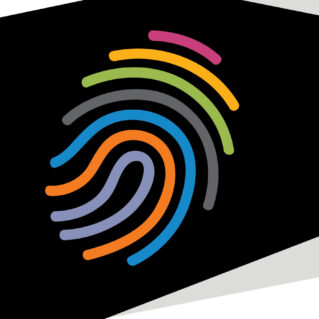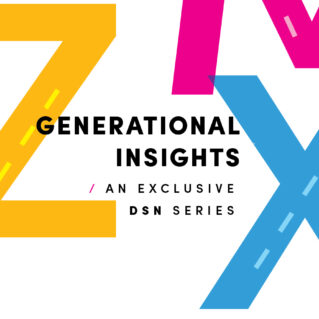While direct sellers have long known the value of try before you buy, technology is creating opportunities to maximize results.
In January, news outlets reported that Amazon was quietly piloting a new ad strategy: free samples based on shoppers’ online activity. The pilot is separate from the Prime Sample Program, a paid subscription service available to Amazon customers.
Let’s say, for example, you’ve been browsing coffee brands on the site and maybe even have a bag or two sitting in your shopping cart for later. Then lo and behold, a surprise shows up in your mailbox or doorstep one day: a coffee sample. Like many other retailers, Amazon understands that these days, customers want to try before they buy. And using the enviable data to which they are privy, they’re taking a targeted (albeit a tad creepy) approach.
The power of sampling, of course, is something direct sellers have known for decades. Samplers in a starter kit can help jumpstart a new distributor’s business or, when purchased by an existing distributor, provide a tool for attracting prospective customers or introducing longtime customers to new products.
Along with a highly personalized customer experience, it’s one of the competitive advantages our industry has had over the retail giants. Given that Amazon’s sampling strategy is based on a treasure trove of customer data, though, this pilot program has thrown up a red flag for some skeptics who have privacy concerns. Even with a sampling program, retailers remain a largely faceless entity. While they can offer up data-driven cross-selling opportunities and product recommendations, they can’t deliver a dedicated salesperson—a welcome change in our digitally-driven society—who knows the product line intimately, can answer any question you may have and who often establishes a relationship with you beyond the sale. Sampling takes the prospective or existing customer’s experience to the next level.
How often does a sample result in a sale? While we don’t have statistics that are specific to direct selling, EventTrack 2018, a report issued jointly by EventMarketer and Mosaic found that across the board among all industries, “the primary purchase decision factor by far is getting a sample or seeing product demonstration, according to nearly half of consumers [47 percent].”
“Sampling is even more effective in an event setting, like a home party or gathering where social influence can help move someone,” says Senior Vice President of SUCCESS Partners Noah Westerlund. “No one wants to miss out. Many of the products in direct selling have advantages that don’t come through via packaging, and being able to not only sample but educate the consumer to the benefits is one of the big advantages of direct selling,”
Technology Expands Reach, Quantifies Results, and More
Emphasizing our foundation of personalized service, though, doesn’t mean to imply that direct sellers aren’t using technology to strengthen their sampling strategies. The reality is quite the contrary. “The execution has been sped up significantly by technology, and the reach has been expanded,” Westerlund adds. Direct selling representatives, then, are no longer limited to an in-person meeting to offer or deliver product samples. However, a representative’s best chance for building a long-term customer relationship will come from incorporating more personal touchpoints with the convenience of technology, whether that consists of a call, a text, a Google Hangout, face-to-face visit or some combination of the above.
Where technology is having perhaps its biggest influence is around tracking; direct selling companies are increasingly relying on metrics to analyze the success of their sampling efforts. Instead of waiting until the conclusion of a sampling initiative to discover an element that needed improvement, direct selling companies now are able to examine their progress at every stage, making tweaks on the spot. “If they’re using an automated system to send the samples, like an app or an online portal, then it’s not difficult to track the close rate of those sampled,” Westerlund says. “It’s a lot more difficult to track when it’s one on one, at least from a micro level. On a macro level, is the business experiencing lift or not? Right now, I’d say a lot of companies are trending towards making sure they implement a sampling program and making it simple and accessible. Technology is driving these programs as it allows for scale, tracking and for quick adjustments to programs.”
“Many of the products in direct selling have advantages that don’t come through via packaging, and being able to not only sample but educate the consumer to the benefits is one of the big advantages of direct selling.” —Noah Westerlund, Senior Vice President, Success Partners
For example, the Mobile Office by SUCCESS (mOS) app, introduced by SUCCESS Partners in summer 2018, has provided distributors the ability to fulfill sampling requests from their mobile devices. The idea is to empower the distributor to work her entire business full circle – sharing, sampling, follow-up, selling, recruiting and onboarding – all from her smartphone or tablet. mOS supports multiple payment modes, giving distributors the option to send samples to potential customers at no charge, or choose the option to charge for the sample only or shipping only. The app also enables distributors to offer samples to prospects overseas, effectively eliminating one of the traditional barriers to building a global independent business. From the company side, while sampling “sounds simple, the nuances can get complicated,” Westerlund says. “Is it a credit-based system or pay as you go? Who is doing the fulfillment? What about cross borders and exchange rates? There are a lot of questions that need to be answered on the back end to make it simple for your users on the front end.”
Best Practices
That simplicity is everything, by the way. The vast majority of sampling is initiated by new distributors and/or lower ranks, simply by virtue of the fact that they comprise one of the largest segments, if not the largest segment, of any direct selling company’s independent sales force. Keeping your initiatives straightforward and affordable, repeatedly training your distributors to use sampling effectively, and providing them the tools to follow up with prospects all will increase the odds of their success. The most common mistake by distributors when it comes to sampling is neglecting to follow up with prospects, and on the company side, it’s the failure to train and train often; “you need to make it core to your culture,” Westerlund says.
Another point worth considering for companies and distributors alike is that sampling isn’t just about the results the product delivers. Results are important, no question. However, the experience that sample delivers may be even more consequential. Companies generally choose which product to offer as samplers based on whether they deliver immediate gratification—results consumers notice on the spot. But how does the product look on the table? How does it feel in the hand or on the face? How did it taste? Is it a product easy enough to use that the customer could see herself using it on a daily basis? Does it work as a stand-alone product, or will she need to purchase additional products to enjoy the full experience, so to speak? If she needs to purchase additional products for best results, how will the prospective customer interpret that caveat?
Whatever you can do to maximize the aesthetics of the customer’s experience—and simplify the delivery—will likely enhance her perceived results. Direct selling companies must determine how to train distributors to harness that customer experience, turn it into a commitment to try to the product for 30 days and, ultimately, create a long-term customer and brand advocate.
THE PSYCHOLOGY OF RECIPROCITY
Should direct sellers ever charge customers for samples?
Reciprocity refers to the old “You scratch my back, I’ll scratch yours” adage.
Although it can play a significant role in any distributor-prospect relationship, it can operate in the customer’s subconscious. It works like this: You offer the prospect a free product sample, and the customer is then more likely to feel obligated to purchase something from you. She may not make a purchase on the spot, but if she decides to do so later, she’s likely to remember your generous gift and make that purchase from you. That doesn’t mean that we should be training distributors to have an agenda with their prospects. The most effective strategy for landing a sale remains the fine art of listening to the prospective customer’s needs, empathizing with her pain points and offering her the opportunity to try a product that could provide her a solution.
Should distributors charge customers for samplers? “This is a tough one, as there are so many factors to consider,” says Senior Vice President of SUCCESS Partners Noah Westerlund. “In general, I don’t think they should for traditional samples, but remember—there’s a difference between sample and trials. You want to create a program that doesn’t allow people to take advantage of samples for free long-term supplies. Remember the idea of reciprocity only happens if you give them something. If you charge for samples that idea goes out the window.”


